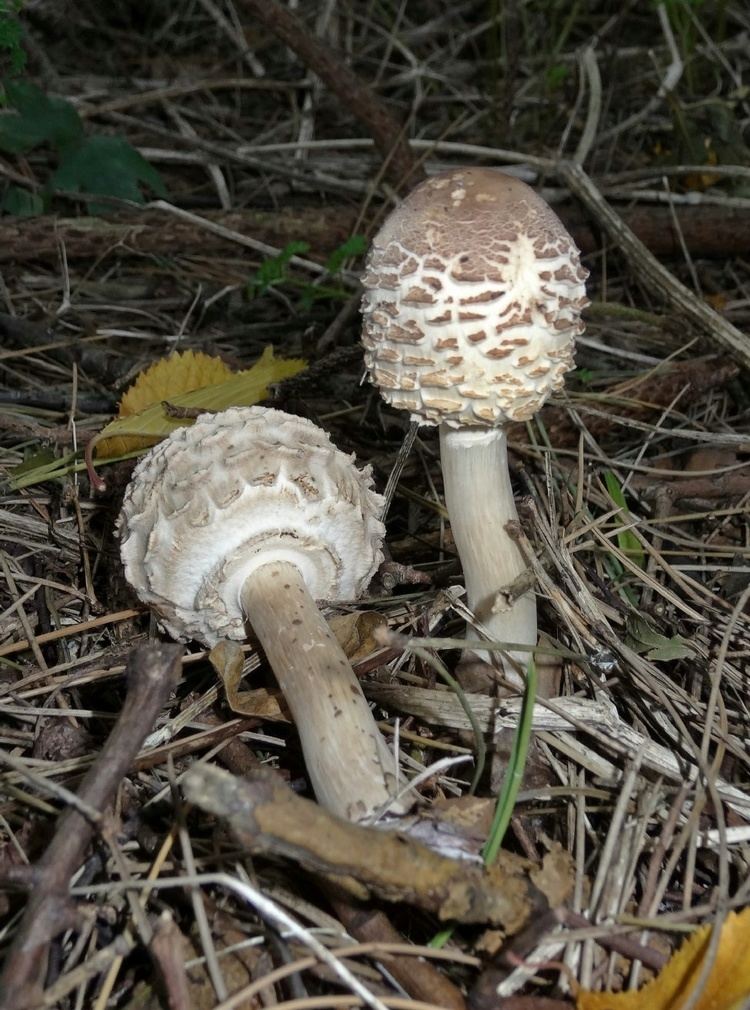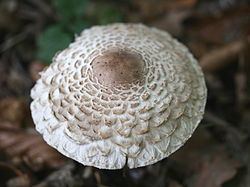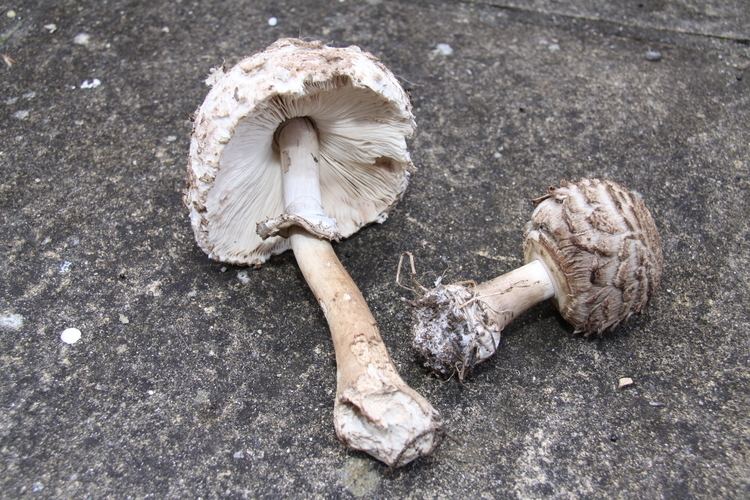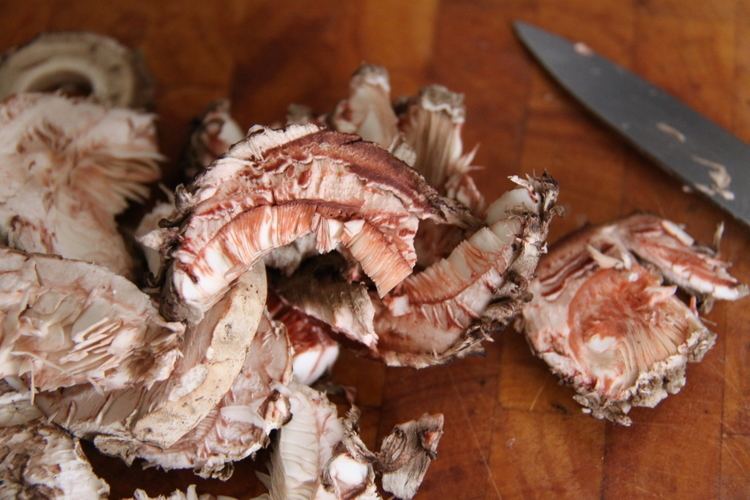Kingdom Fungi Class Agaricomycetes Family Agaricaceae | Phylum Basidiomycota Order Agaricales Genus Chlorophyllum | |
 | ||
Similar Macrolepiota procera, Marasmius oreades, Hydnum repandum, Agaricus bitorquis, Agaricus augustus | ||
The Shaggy parasol is the common name for three closely related species of mushroom, Chlorophyllum rhacodes, C. olivieri and C. brunneum, found in North America, Europe and Southern Africa (the latter species is also found in Australia).
Contents
- Wild edible shaggy parasol the mushroom that taste like steak
- Taxonomy
- Description
- Edibility
- Similar species
- References

Wild edible shaggy parasol the mushroom that taste like steak
Taxonomy

Chlorophyllum rhacodes, C. olivieri and C. brunneum were formerly known as Macrolepiota rhacodes or Lepiota rhacodes, but the name was changed on the basis of molecular phylogenetic evidence demonstrating a closer relationship to Chlorophyllum molybdites than to Macrolepiota procera. The subspecies Macrolepiota rhacodes var. brunneum was also elevated to species status as Chlorophyllum brunneum. Chlorophyllum olivieri is a closely related species that is also eaten as the "Shaggy Parasol."

Many older reference books spell the epithet "rachodes" rather than "rhacodes". The spelling "rachodes" was used by Vittadini when he first published the species in 1835, but is erroneous as the Greek word rhakos 'piece of cloth' should be transcribed as rhacos.
Description

The shaggy parasol is a large and conspicuous agaric, with thick brown scales and protuberances on its fleshy white cap. The gills and spore print are both white in colour. Its stipe is slender, but bulbous at the base, is coloured uniformly and bears no patterns. It is fleshy, and a reddish, or maroon discoloration occurs and a pungent odour is evolved when it is cut. The egg-shaped caps become wider and flatter as they mature.
The stipe of C. rhacodes grows to 10 to 20 cm (4 to 8 in) tall and has a diameter of 1 to 2 centimetres. The cap grows to 7.5 to 20 cm (3.0 to 7.9 in) across,
Edibility
The shaggy parasol is popularly praised as a choice edible mushroom. However, it contains toxins which can cause gastric upsets when eaten raw or undercooked, and some individuals show a strong allergic response even after cooking.[citation needed]
Furthermore, young shaggy parasols look identical to the poisonous Chlorophyllum molybdites (the mushroom that causes the most poisonings in North America yearly). Checking the spore print is essential as C. molybdites' print is green (older specimens have slightly green gills). As a result, this mushroom is not recommended for inexperienced hunters.
Similar species
The shaggy parasol is similar in appearance to the similarly edible parasol mushroom, Macrolepiota procera. The latter grows considerably larger however, and is more likely to be found in the open than C. rhacodes which prefers more shade and dislikes open pastures and fields. Another distinguishing feature is that C. rhacodes lacks the brown bands that are on the stem of M. procera.
